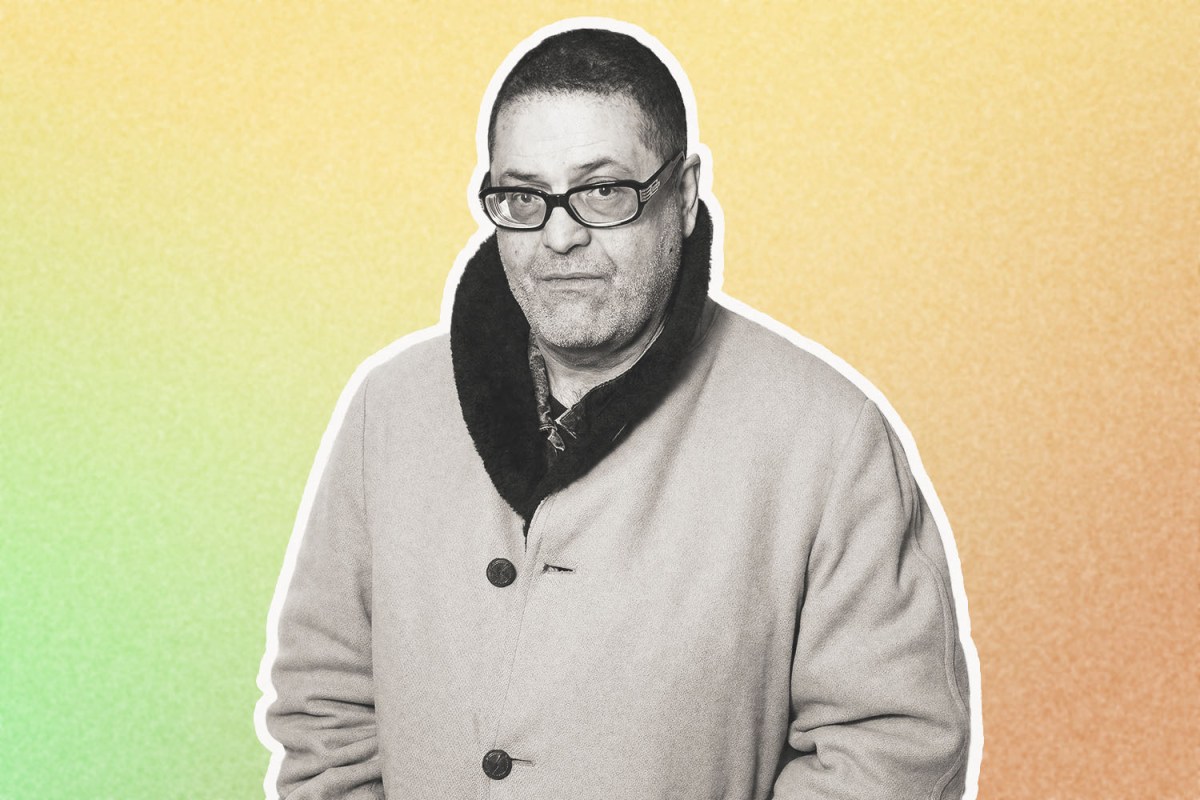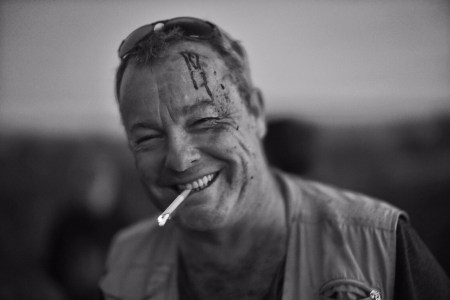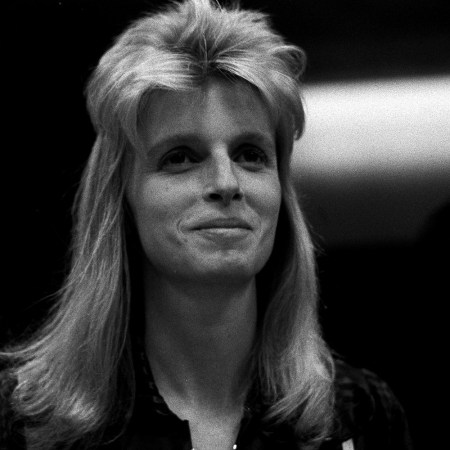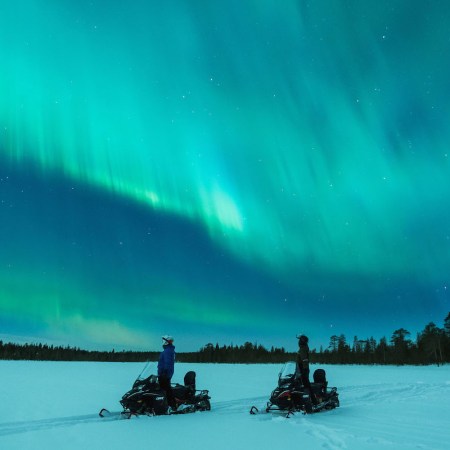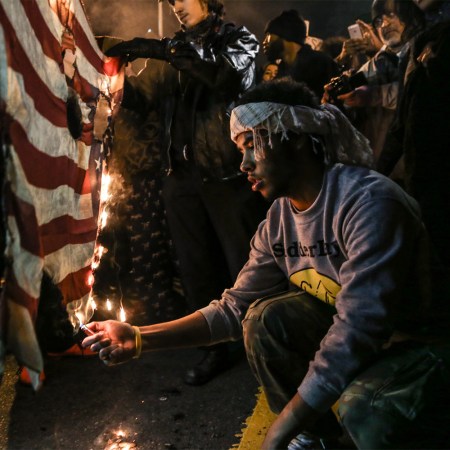Michel Haddi is driving through Saudi Arabia when his car breaks down. That a police car is soon approaching would normally be good news. “But we had 12 bottles of Johnny Walker for sale in the boot and I can’t believe it,” he says. “I’m convinced that I’m going to go to jail, going get whipped. I see the cop coming, I hear the boot click open slightly, so I go up to him and give him a kiss Arabic-style and slip [a banknote] into his hand and say ‘Safi?’ to him. And on he went. The thing is, I think I just believe in me. I’ve nearly died six or seven times but intuition [has saved me].”
Indeed, for a photographer best known for shooting celebrity portraits — from Cameron Diaz to David Bowie, Debbie Harry to Sean Connery, you name them, he’s likely shot them — Haddi’s life has been characterized by close escapes. And these weren’t all just the result of a spell using his early 20s operating as a runner of hooch in countries where alcohol isn’t most appreciated.
There was the time he took the Red Hit Chili Peppers into East Germany, for example — the day after the wall came down — and was rescued by his taxi driver from being shot by a truck load of disgruntled and trigger-happy soldiers. Or the time he was shooting in Yemen and was saved from being kidnapped and killed — as two tourists were a week later — by the sheer coincidence of his surname meaning “boss” in some local tribal dialect. When a tall man told him “Welcome to my country” one day, it was later revealed that said tall man was Osama Bin Laden.
“Somehow I’ve seen a lot of AK-47s [during my career],” says the ebullient Algerian-born and London-based Frenchman. “But then my real heroes in photography are the likes of Don McCullin, Tim Page and Sean Flynn.” And, yes, they’re all war photographers. “I’ve always loved their one photo from one moment style of shooting.”
It’s arguably the same approach that has seen Haddi be recognized for his distinctive style — his work is being celebrated at this May’s Photo London exhibition (May 11-14). His subjects are typically shot with minimum staging, often in movement, slightly off-guard. A keen martial artist, he draws a parallel with The Karate Kid and learning to reduce a repetitive sweeping movement to the briefest of precise actions.
“An iconic photograph scrapes off all the unnecessary [visual noise] in the same way too,” he explains. “There are no tricks. No palaver. You want the bare minimum. But you can’t force that. It has to come naturally. I really I have no interest to do a conventional portrait. I’ve never really understood the word ‘portrait.’ It’s just a good or bad picture. And I think a lot of [portraiture] today is just trying too hard.
“That said, sometimes you shoot on instinct. It’s a feeling,” Haddi adds. “When I worked with Tupac [Shakur] I told him he reminded me of young Martin Luther King, and — I don’t know why — I wanted to shoot him with his torso bared and eyes closed, like a dead man. And then he was shot. When I worked with Brandon Lee I could see death there too. I have a lot of intuition. I’ve always just been able to quickly find something, a little thing, that makes a photo interesting.”
That Haddi has taken plenty of interesting photos is, he reckons, as much thanks to personality as it is technique or a good eye. As he puts it, “I’m not scared of celebrities. I’m at ease with them, and that really helps. And I respect what they do too.” Indeed, he reckons that a lot of them are barely coping with the fear of not being respected for their work.
“I mean, most of them regard what they do as a craft and work extremely hard at it,” Haddi suggests. “Take Ian McKellen, for example. He has this fabulous aura, just being him, the way he speaks. But you can see that deep down what he does is not a walk in the park for him, not at all. And I think we believe a walk in the park is the case for celebrities.”
How a Former Hedge Fund Guy Became a Top Travel and Adventure Photographer
David Yarrow’s new book, “Storytelling,” takes readers from South Sudan to the American WestThis ease perhaps comes from Haddi’s upbringing, which was no walk in the park either. Haddi never knew his father — a French Army officer — and spent much of his childhood in an orphanage. His mother would bring him old fashion magazines, which sparked his interest in photography. Haddi says that he had to find some escape from the wrong part of town by pursuing something entirely at odds with his circumstances or end up either in the army or a gangster. He learned to temper his “tendency to go off the tracks” — offered a $7,000 payday go drive a BMW with a trunk-load of gold from Romania to Paris, he politely, though reluctantly, declined, “because it seemed likely I’d end up in prison or dead” — and instead chose “to focus on what I was good at, taking photos.”
Still, he says, street-smarts have often worked in his favor. “When I lived in Venice Beach I remember going home from a bar, a bit tipsy, wearing a big bomber jacket. And this guy comes towards me — black glasses, black hat, black jacket — and I look at him and pat my chest and say ‘Alright?’ And he walks by me and does the same. We were telling each other we were packed,” says Haddi — and he’s full of these kinds of stories. “A few days later I read how three Mexican guys were whacked nearby. It was the guy. But I learned from the neighborhood I grew up in — which was the worst of the worst, with all the bad boys. That’s what they told me to do. ‘Always let people know you’re packed,’ they said.”
What, one might wonder, would the bad boys make of Haddi’s latest project — a forthcoming exhibition and book of still-life photos of flowers? Haddi counters the suggestion that they might be less impressed by explaining that these floral tributes are, rather, more “sex, blood and flowers,” a way, he says with a laugh, of sneaking pornography into fashion magazines. What else was he going to do? It was the pandemic lockdown. He still had to take photos.
“I will take photographs when when I’m in my burial chamber,” he says. “I will burst out of the tomb and take one more photograph. I was shooting in Thailand and had a virus and was dying and even on my way to the airport [on a stretcher] I had my camera with me and was taking photos. I said ‘if I die, at least I die with a camera in my hand, like Sean Flynn.’ I love photography so much. My wife says she’s glad I do because otherwise I’d be dead. And photography will be part of my life until I am.”
This article was featured in the InsideHook newsletter. Sign up now.
